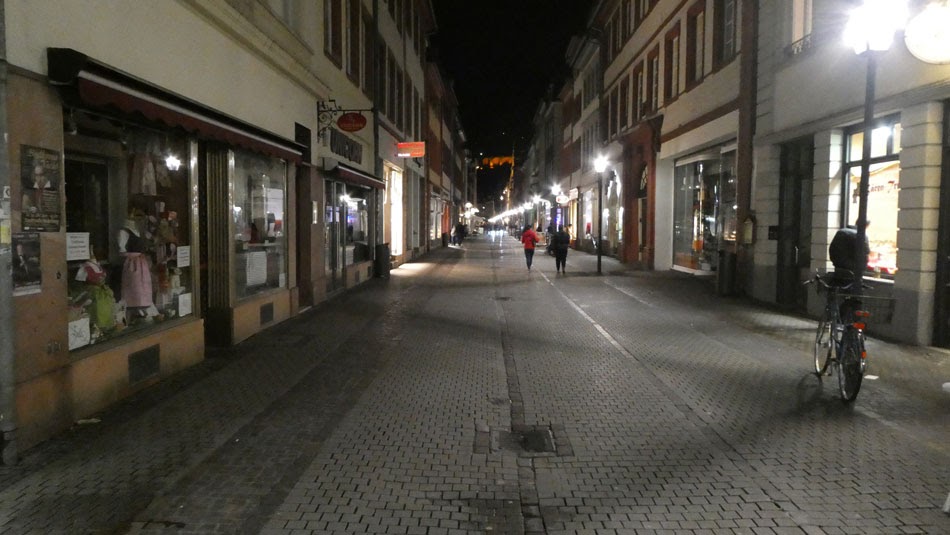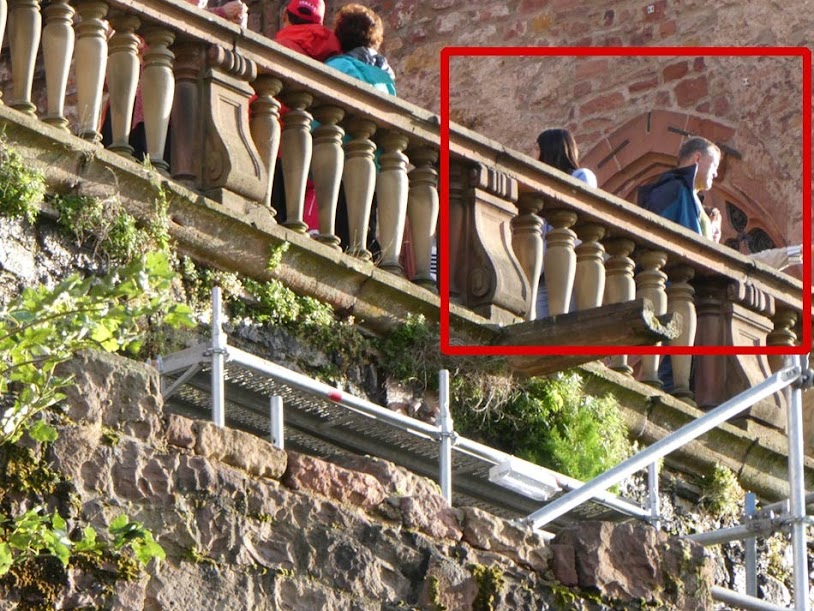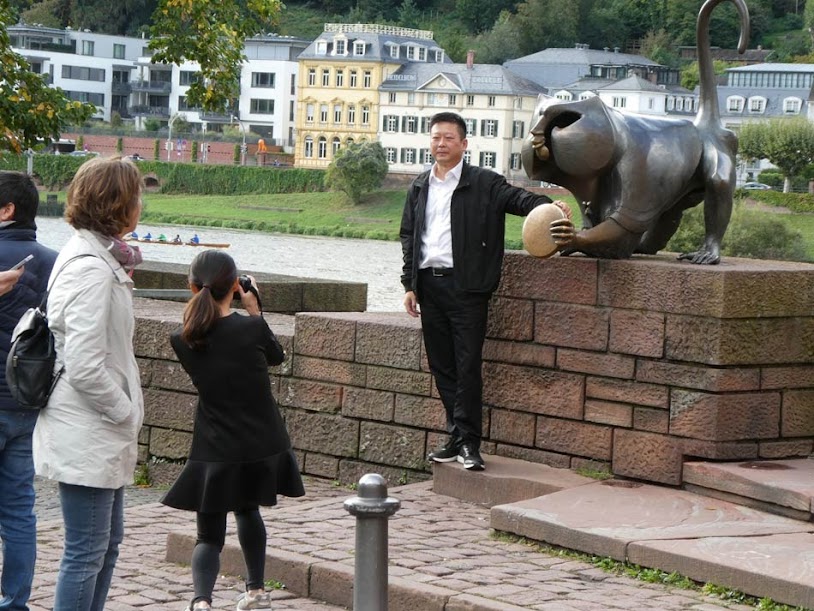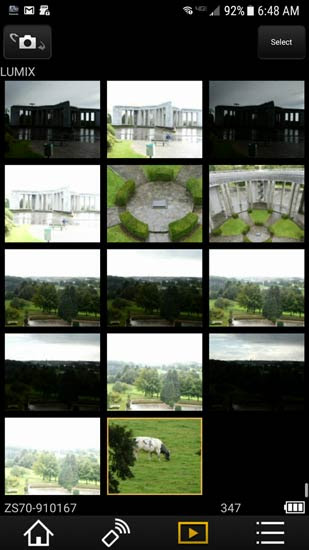General specs:
* Lens: 30X optical zoom (24-720mm equivalent)
* Max aperture: F3.3–6.4
* ISO: Auto, 80-3200
* RAW: yes (.RW2)
* Max resolution: 5184 x 3888 (20 mp)
* Sensor: 1/2.3" (6.17 x 4.55 mm) BSI-CMOS
* 3-inch Articulating LCD and electronic (LVF) viewfinder (100% coverage)
* Shutter: 4 sec to 1/2000 (mechanical) and to 1/16000 (electronic)
* Manual focus: yes
* High speed burst setting (10 fps)
* Post-focus and HDR settings
* Video resolutions: 3840 x 2160 (30p), 1920 x 1080 (60p, 60i, 30p), 1280 x 720 (30p), 640 x 480 (30p)
...and much, much more
I'm back after having spent a whirlwind 7 day tour of 4 European countries (Germany, France, Belgium, Luxembourg). This was a "programmatic" travel event, with me being among a group of 11 who shared two rental cars. Not a lot of time to do things solo, but a fantastic time nonetheless.
I didn't pack my Canon EOS 60D SLR in the interest of traveling light, so I took along my brand new Panasonic Lumix ZS70 (known as the TZ90 in Europe). This is no where near a comprehensive review as that would require multiple pages and probably days to properly assemble and present, but instead, an effort to highlight what worked for me and what I found lacking.
Some might say a week isn't enough time to properly review a camera, and they would probably be right. The dizzying array of photo options is mind boggling, most of which I won't ever use (or remember how to without lugging around a user guide ). Those features that I relied on worked very well. All images taken in 4:3 aspect ratio and are presented exactly as the camera sensor produced them, and other than resizing for web display, no additional manipulation was added.
). Those features that I relied on worked very well. All images taken in 4:3 aspect ratio and are presented exactly as the camera sensor produced them, and other than resizing for web display, no additional manipulation was added.
Immediately I found I relied heavily on the ZS70's main control dial functions (it's nearly impossible for me to dig into menus on the fly as we were constantly moving, often times walking miles per day).
The ZS70 has an "Intelligent Auto" mode that evaluates and makes many decisions for you based on contrast, lighting and other factors. If there is strong difference between subject and its surrounding, it automatically enters a bracketing mode, and fires off a series of +/- exposed shots, to help ensure you will get a keeper from the bunch. Note of caution though: it's not something I could always predict, so don't rapidly move the camera after pressing the shutter release...it may not be finished!

Intelligent Auto mode also did a great job of capturing low light night scenes, rendering very close to how my eye perceived the same scene:

The ZS70 features a 30X optical zoom (24-720mm 35mm equivalent) and coupled with image stabilization, turned in adequately sharp handheld images when zoomed out to 720mm (35mm equivalent). Below: f6.4, 1/125th, ISO-250. Image stabilization to the rescue!

Magnified area from above:

Another handy feature for us tourists on the mode control dial is panorama. Simply rotate to the panorama position, compose and depress the shutter release as you swing the camera:

I found grab shots fairly easy to make, as the start-up lag is relatively quick despite the need for the camera to move the collapsed lens from the powered-off to the powered-on position:

The typical converging of vertical lines when shooting upward at the maximum wide angle setting (24mm equivalent):

New to me with this camera is the ability to connect via wi-fi to a smart phone to manage camera settings, remote control and more. It is one of the most comprehensive apps of its type on the market:

To recap, the mind-boggling array of capabilities and features makes it impossible to do a thorough review here, but here is what I liked most about the Lumix ZS70:
* Sleek, compact size, easy to travel with
* Sufficient options on the main control dial to cover "most" amateur photo needs without digging deep into menus
* Electronic live viewfinder (diopter adjustable) is a lifesaver in situations where bright glare makes using the LCD screen difficult (I used it nearly all the time!)
* When switching to manual focus, the lens mounted control ring makes focus adjustments a snap
* LCD touch screen is a handy alternative to rotating dials and pushing buttons
* I like the 30X optical zoom with adequately wide 24mm equivalent
* Adequate battery life (approx. 380 shots per charge / 250 using live viewfinder)
* Articulating LCD viewfinder (180 degrees)
* Ability to link and control camera with smart phone using Panasonic "Image App" via wi-fi
What I didn't like:
* Automatic switching between electronic (LVF) viewfinder and LCD screen sometimes problematic (instead of automatically detecting my eye as it should, I had to press the LVF activation button in some instances)
* Some LCD symbols very small and difficult to read unless you have very good eyesight
* 20 mp resolution on the small 1/2.3" sensor results in additional noise under low light imaging conditions
* In single shot mode, there was a significant lag after every shot (about 3 seconds) before you can take another shot, even using a high speed Class 3 SDXC card
* If you suffer from "wandering thumb" be careful you don't inadvertently depress function buttons on the back of the camera during handling and shooting
* Very limited support for the Panasonic .RW2 raw format in post processing software
All in all I like this camera and take its good with its "bad". Can it replace a well featured contemporary digital SLR? No way. Will it "git 'er done" in a lightweight, highly featured package? Heck yes!
* Lens: 30X optical zoom (24-720mm equivalent)
* Max aperture: F3.3–6.4
* ISO: Auto, 80-3200
* RAW: yes (.RW2)
* Max resolution: 5184 x 3888 (20 mp)
* Sensor: 1/2.3" (6.17 x 4.55 mm) BSI-CMOS
* 3-inch Articulating LCD and electronic (LVF) viewfinder (100% coverage)
* Shutter: 4 sec to 1/2000 (mechanical) and to 1/16000 (electronic)
* Manual focus: yes
* High speed burst setting (10 fps)
* Post-focus and HDR settings
* Video resolutions: 3840 x 2160 (30p), 1920 x 1080 (60p, 60i, 30p), 1280 x 720 (30p), 640 x 480 (30p)
...and much, much more
I'm back after having spent a whirlwind 7 day tour of 4 European countries (Germany, France, Belgium, Luxembourg). This was a "programmatic" travel event, with me being among a group of 11 who shared two rental cars. Not a lot of time to do things solo, but a fantastic time nonetheless.
I didn't pack my Canon EOS 60D SLR in the interest of traveling light, so I took along my brand new Panasonic Lumix ZS70 (known as the TZ90 in Europe). This is no where near a comprehensive review as that would require multiple pages and probably days to properly assemble and present, but instead, an effort to highlight what worked for me and what I found lacking.
Some might say a week isn't enough time to properly review a camera, and they would probably be right. The dizzying array of photo options is mind boggling, most of which I won't ever use (or remember how to without lugging around a user guide
 ). Those features that I relied on worked very well. All images taken in 4:3 aspect ratio and are presented exactly as the camera sensor produced them, and other than resizing for web display, no additional manipulation was added.
). Those features that I relied on worked very well. All images taken in 4:3 aspect ratio and are presented exactly as the camera sensor produced them, and other than resizing for web display, no additional manipulation was added.Immediately I found I relied heavily on the ZS70's main control dial functions (it's nearly impossible for me to dig into menus on the fly as we were constantly moving, often times walking miles per day).
The ZS70 has an "Intelligent Auto" mode that evaluates and makes many decisions for you based on contrast, lighting and other factors. If there is strong difference between subject and its surrounding, it automatically enters a bracketing mode, and fires off a series of +/- exposed shots, to help ensure you will get a keeper from the bunch. Note of caution though: it's not something I could always predict, so don't rapidly move the camera after pressing the shutter release...it may not be finished!
Intelligent Auto mode also did a great job of capturing low light night scenes, rendering very close to how my eye perceived the same scene:
The ZS70 features a 30X optical zoom (24-720mm 35mm equivalent) and coupled with image stabilization, turned in adequately sharp handheld images when zoomed out to 720mm (35mm equivalent). Below: f6.4, 1/125th, ISO-250. Image stabilization to the rescue!
Magnified area from above:
Another handy feature for us tourists on the mode control dial is panorama. Simply rotate to the panorama position, compose and depress the shutter release as you swing the camera:
I found grab shots fairly easy to make, as the start-up lag is relatively quick despite the need for the camera to move the collapsed lens from the powered-off to the powered-on position:
The typical converging of vertical lines when shooting upward at the maximum wide angle setting (24mm equivalent):
New to me with this camera is the ability to connect via wi-fi to a smart phone to manage camera settings, remote control and more. It is one of the most comprehensive apps of its type on the market:
To recap, the mind-boggling array of capabilities and features makes it impossible to do a thorough review here, but here is what I liked most about the Lumix ZS70:
* Sleek, compact size, easy to travel with
* Sufficient options on the main control dial to cover "most" amateur photo needs without digging deep into menus
* Electronic live viewfinder (diopter adjustable) is a lifesaver in situations where bright glare makes using the LCD screen difficult (I used it nearly all the time!)
* When switching to manual focus, the lens mounted control ring makes focus adjustments a snap
* LCD touch screen is a handy alternative to rotating dials and pushing buttons
* I like the 30X optical zoom with adequately wide 24mm equivalent
* Adequate battery life (approx. 380 shots per charge / 250 using live viewfinder)
* Articulating LCD viewfinder (180 degrees)
* Ability to link and control camera with smart phone using Panasonic "Image App" via wi-fi
What I didn't like:
* Automatic switching between electronic (LVF) viewfinder and LCD screen sometimes problematic (instead of automatically detecting my eye as it should, I had to press the LVF activation button in some instances)
* Some LCD symbols very small and difficult to read unless you have very good eyesight
* 20 mp resolution on the small 1/2.3" sensor results in additional noise under low light imaging conditions
* In single shot mode, there was a significant lag after every shot (about 3 seconds) before you can take another shot, even using a high speed Class 3 SDXC card
* If you suffer from "wandering thumb" be careful you don't inadvertently depress function buttons on the back of the camera during handling and shooting
* Very limited support for the Panasonic .RW2 raw format in post processing software
All in all I like this camera and take its good with its "bad". Can it replace a well featured contemporary digital SLR? No way. Will it "git 'er done" in a lightweight, highly featured package? Heck yes!


